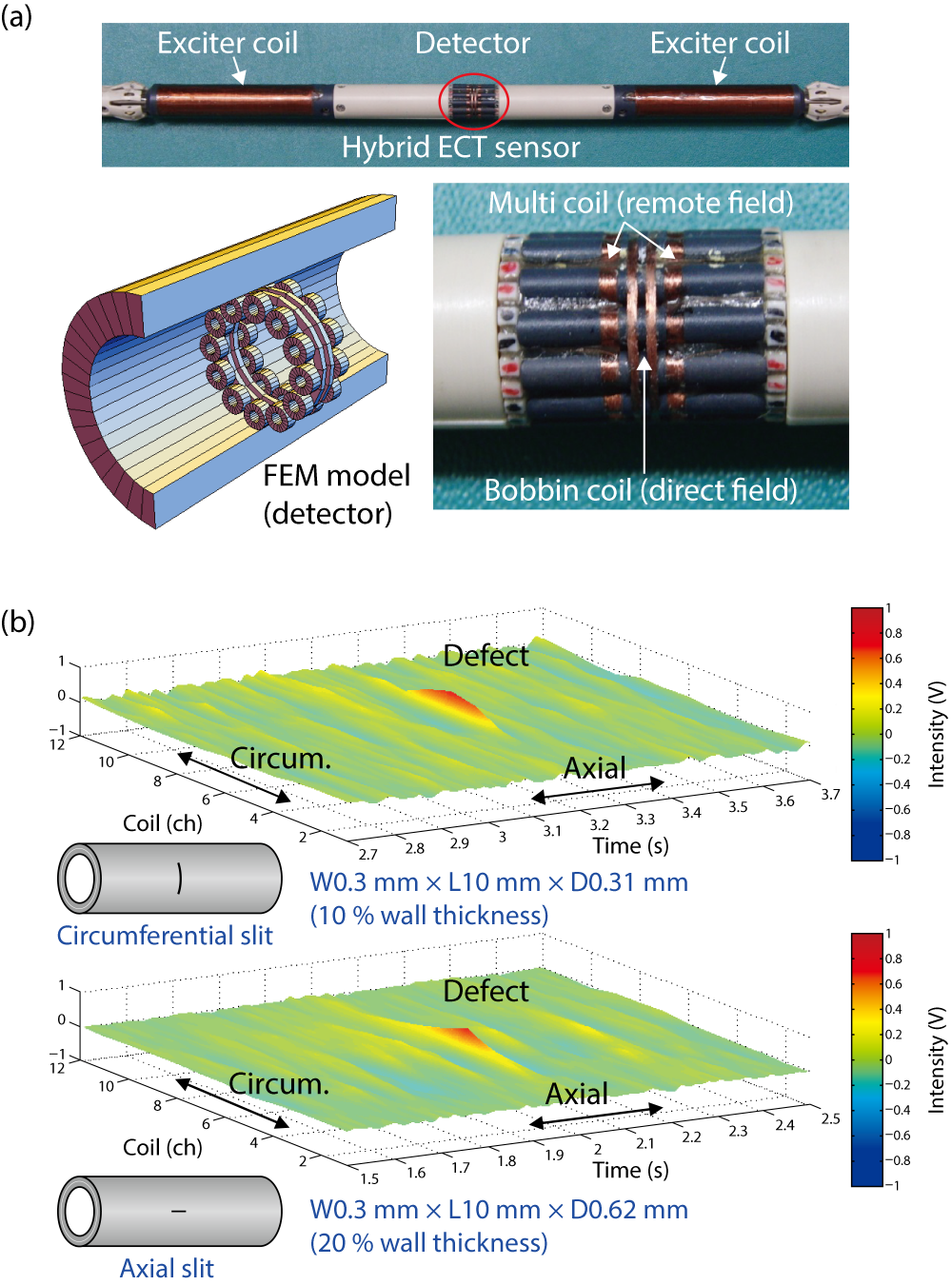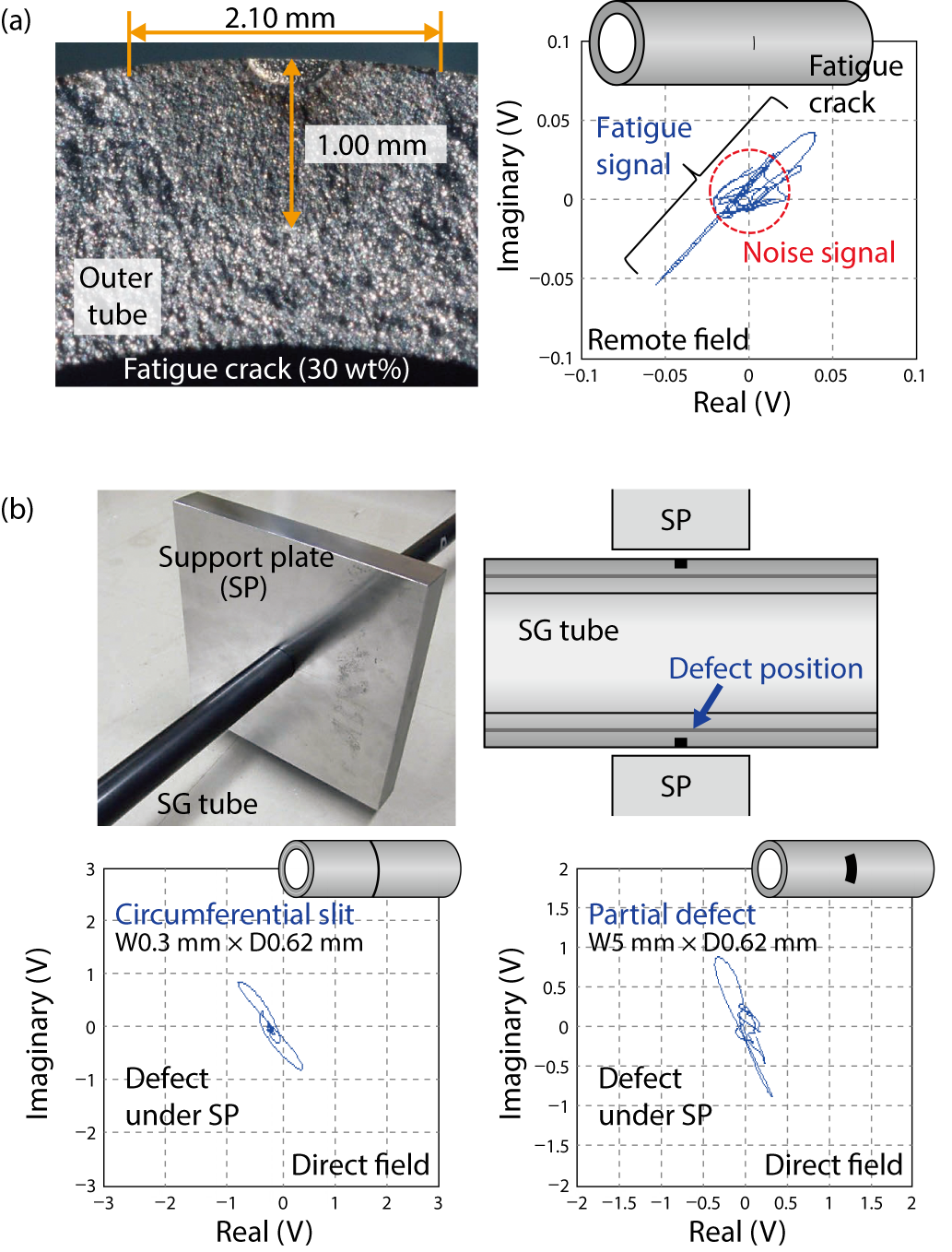
Fig.7-13 Hybrid ECT sensor (a) and detection of EDM defects (circumference and axial slit) (b)

Fig.7-14 Detection of a fatigue crack by a multi-coil sensor (a) and defects under the support plate by a bobbin coil (b)
A hybrid eddy current testing (ECT) sensor is being developed based on a combination of direct and remote magnetic fields to detect small defects near and under the support plate (SP) of the steam generator (SG) tubes of JSFR. Since SG tubes are thinner (19 mm outer diameter and 12 mm inner diameter) and made of 9Cr-1Mo steel, they are more difficult to be inspected than light water reactor tubes. A hybrid ECT sensor is required for having the accuracy and sensitivity to detect small defects for further evaluation of their size and depth and prediction of their growth. Development of this technology started with a multi-coil sensor that could be made more sensitive to small defects on the outer surface of the SG tubes by optimizing coils arrangement, number, and size using FEM numerical simulations. An increased eddy current flow on the surface of the SG tubes resulted in a higher sensitivity to small defects, as shown in the experimental data. Fig.7-13 shows the hybrid ECT sensor detecting a slit (0.3 mm wide and deep). A C-scan of the measured signal shows the defect position on the tube surface. Ferrite cores improve the electromagnetic characteristics of the designed hybrid ECT sensor to detect a fatigue crack (under 10 µm wide and 1 mm depth) (Fig.7-14(a)).
In the past, the sizes and positions of defects in ferromagnetic tubes were distinguished using two sensor units (ECT and RF-ECT). Because of their differing lift-off noise distributions and spatial separation, it was difficult to use sensor-combination signals to suppress noise levels and correlate their signals to defect locations. In the new approach, the sensors are combined in the same location and differentiate the defect position while maximizing sensor sensitivity to reduce interference signal between them. The hybrid ECT sensor has both magnetic field systems integrated into a single unit. Fretting wear defects were created on the outer surface of a tube under the SP. Fig.7-14(b) shows the performance of an ECT sensor for defects under tube SP. The measurements demonstrate the feasibility of this approach, resulting in a higher S/N ratio for detecting both defects.
In the future, to shorter the inspection time, we plan to inspect SG tubes without draining the sodium.